22 Helping Communities Make Difficult Decisions Through Deliberative Discussions
Chapter Objectives
Students will:
- Accurately describe the goals of a deliberative discussion.
- Identify historical uses of deliberative discussion.
- Demonstrate five intellectual virtues as participants in a deliberative discussion.
- Avoid using calls for civil conversations to quell disagreement and maintain the status quo.

You have likely witnessed or participated in a debate. Perhaps you watched US presidential candidates like Kamala Harris and Donald Trump debate over foreign policy, or maybe you watched Shannon Sharpe and Skip Bayless debate the merits of a particular basketball player on Fox Sports. If so, you know that debates typically feature clashing arguments for and against a topic. They tend to emphasize disagreements between two sides and imply that one position is a winner and the other is a loser.
You probably have not watched or participated in a deliberative discussion. In contrast to debate, a deliberative discussion encourages thoughtful investigation of multiple approaches to improving a public issue. As we will explain, it takes dedicated work and planning to organize a deliberative discussion, and it typically requires guidance from facilitators.
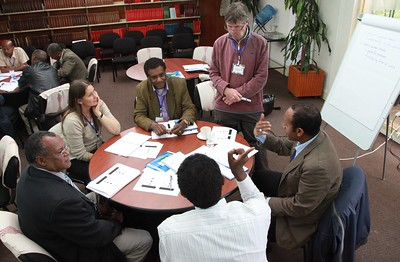
However, a deliberative discussion has many advantages over debate. It improves participants’ understanding of an issue’s complexity, helps them find common ground among competing interests, and enables them to make hard choices. This chapter will help you better understand the nature of a deliberative discussion and how to lead and participate in one.
We will begin this chapter by identifying the major goals of a deliberative discussion. We will then introduce you briefly to the history of deliberative discussions in the United States. Next, the chapter will identify five intellectual virtues that participants in deliberative discussions should adopt to help ensure productive conversations. The chapter will end by considering the general benefits and limitations of deliberative discussions.
Goals of Deliberative Discussions
In chapter 20, we defined a deliberative discussion as a group conversation through which a community, guided by one or more moderators, examines a complex public problem and a range of available solutions to ultimately arrive at a choice or conclusion. We explained that the deliberative discussion nearly always follows some type of deliberative presentation (though both may vary in format and timing). Together, the deliberative presentation and subsequent discussion form the deliberative process, or what some people refer to simply as deliberation.
A deliberative discussion strives to produce both public knowledge and public judgment. Let’s talk briefly about each goal.
Public Knowledge
 Public knowledge refers to participants’ shared and improved understanding of the wicked problem and possible solutions as they offer and hear multiple points of view. Recall standpoint theory from chapter 7, which posits that our social identities influence our knowledge of the world and our perceptions of what is “true” or “normal.”
Public knowledge refers to participants’ shared and improved understanding of the wicked problem and possible solutions as they offer and hear multiple points of view. Recall standpoint theory from chapter 7, which posits that our social identities influence our knowledge of the world and our perceptions of what is “true” or “normal.”
 By hearing and genuinely considering viewpoints, experiences, and values from participants with differing standpoints, deliberative discussion shifts us from our individual, partial knowledge to a shared, public knowledge that is more robust. Public knowledge develops as we, together, better recognize the complexity of problems, the merits of alternative views, and the demerits of our originally preferred solution.
By hearing and genuinely considering viewpoints, experiences, and values from participants with differing standpoints, deliberative discussion shifts us from our individual, partial knowledge to a shared, public knowledge that is more robust. Public knowledge develops as we, together, better recognize the complexity of problems, the merits of alternative views, and the demerits of our originally preferred solution.
Box 22.1 Goals of Deliberative Discussions
- produce public knowledge: participants’ shared and improved understanding of the wicked problem and possible solutions as they offer and hear multiple points of view
- produce public judgment: the community’s thoughtful choice about its desired approach or next steps to address the problem based on the public knowledge developed during the discussion
Public Judgment
 A deliberative discussion’s ultimate goal is to produce public judgment. Public judgment is the community’s thoughtful choice about its desired approach or next steps to address the problem. Public judgment is based on the public knowledge developed during the discussion.
A deliberative discussion’s ultimate goal is to produce public judgment. Public judgment is the community’s thoughtful choice about its desired approach or next steps to address the problem. Public judgment is based on the public knowledge developed during the discussion.
Two elements are worth noting here: First is that the group’s choice comes after they have produced public knowledge. That timing helps prevent what modern psychology scholars call groupthink, which is a phenomenon that occurs when members’ desire for harmony outweighs their willingness to critically examine alternative perspectives. Such critical examination (including scrutiny and disagreement) is required in a deliberative discussion.
The second aspect worth noting is that a deliberative discussion seeks to move participants to choice making. The ultimate goal of a deliberative discussion is for participants to choose the next best step(s) to solve the problem and ease the controversy, having considered the trade-offs of at least three broad approaches.
The next steps chosen can vary widely, such as adopting a particular approach, exploring new options, or finding answers to questions raised during the discussion. Naturally, participants in a deliberative discussion will not always come to an agreement about the next step(s) to take. But because they have thoughtfully considered the options and competing interests together, each will be prepared to advance a thoughtful proposal.
The “Public” in Public Knowledge and Public Judgment
Keep in mind that the “public” in public knowledge and public judgment signals that a public is required to produce each together as a group. Recall from chapter 2 that a public refers to a collection of people who are joined together in a cause of common concern. Thus, public knowledge and public judgment can only be achieved by such a collection of people. These goals cannot be attained by individuals working alone. Box 22.2 offers an example of a public that engaged in deliberative discussion. In the next section, we look back historically to recognize the long legacy of deliberative discussions to aid public decision-making.
Box 22.2 Public Knowledge and Public Judgment in a Deliberative Discussion
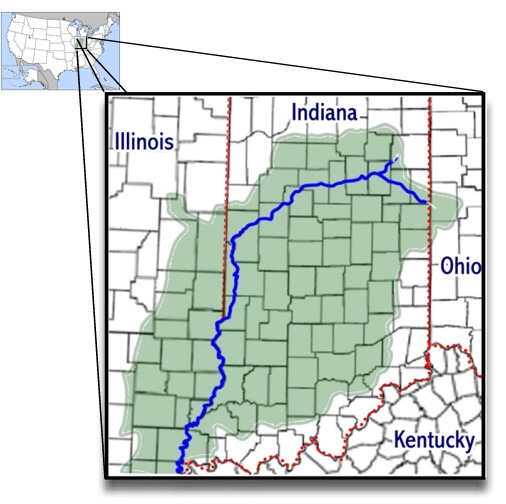
A deliberative discussion occurred in Indiana in 2022 to address the management of a local watershed. A watershed is an area of land that directs rainfall and snowmelt toward local creeks, streams, and rivers. In this case, the watershed spread across four Indiana counties. The discussion was sparked by widespread concern over the poor quality of water entering a nearby creek due to a variety of pollutants, including E. coli from manure spread on adjacent farmland, contamination from improperly installed septic tanks, and litter from people who recreate on the creek. However, stakeholders disagreed about how to best improve the water quality or who to blame.
Consequently, trained facilitators at a nearby college organized a deliberative discussion for a variety of residents and local organizations across the counties. During their discussion, participants produced the following:
- Public knowledge about the issue’s complexity, such as recognizing that both farmers who own nearby land and recreators who canoe on the creek are impacted by the water quality and contribute to its pollution.
- Public judgment when they agreed on an educational approach to preserving the watershed’s health. They determined that educational efforts should also attend to related concerns like soil runoff and animal welfare versus only targeting water quality.[1]
Deliberative Discussions in Historical Context
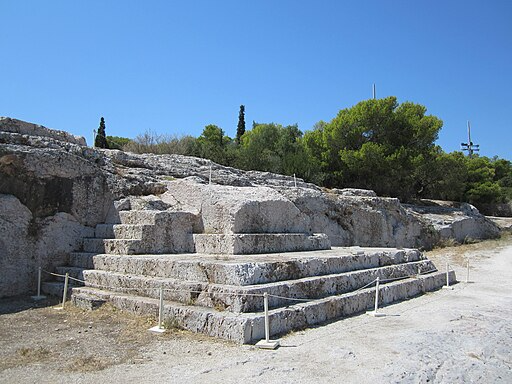
People in the Western political tradition have historically used deliberative discussions to enact and improve democracy.
One of the earliest venues for democratic governance—during the sixth and fifth centuries BCE—was the Athenian Assembly. As we discussed in chapter 1, Greek citizens convened there to raise, discuss, and make decisions about public issues.
Perhaps because of the strengths of such deliberative exchanges, we find movements in the United States that strongly resemble the Athenian precursor, albeit on a smaller scale. Box 22.3 provides several US examples from over the past five centuries! For hundreds of years, Americans have recognized the value of deliberative discussions in North American democratic participation.
Box 22.3 Deliberative Discussions in the United States from the Seventeenth to Twenty-First Centuries
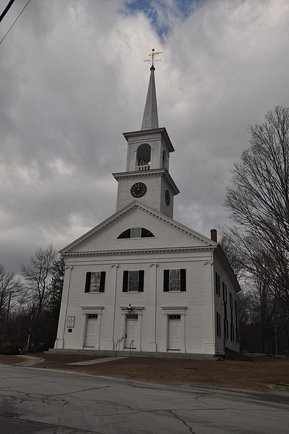
In the seventeenth century, New England colonists developed town hall meetings. These meetings were informally structured, met on an ad hoc basis, and included citizens, town officials, and magistrates. As colonists grew dissatisfied with British rule, town hall meetings became a place to discuss their situation and to deliberate possible actions.
During the nineteenth century, new efforts arose in the United States to promote public discussions and educate our young country’s citizens. The Lyceum movement emerged in the 1820s and lasted until just after the Civil War in the 1860s. Teacher and scientist Josiah Holbrook started the movement and named it after Aristotle’s school in ancient Greece. It provided adult education and a place to discuss public issues.

The Chautauqua movement began in 1874 on the heels of the Lyceum movement. It similarly functioned as a kind of adult education that included discussion of civic affairs. It started in New York and spread across the country by 1880. Though most groups disbanded by the 1930s, you can still find Chautauqua meetings today.
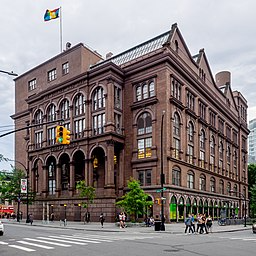
The Open Forum movement developed around the same time as the Chautauqua movement. Starting from such established open forums as the Cooper Union in New York City (1894)[2] and the Ford Hall Forum in Boston (1908),[3] the Open Forum movement gained popularity across the country during the 1930s. It utilized community discussions to educate and engage adult citizens in social and political topics.
During this same period of the 1920s and 1930s, American academics also grew interested in the role of public discussions. These years correspond with the aftermath of World War I; the Progressive Era when many social reformers attempted to strengthen national democratic practices; and the Great Depression. Some college professors of speech responded to societal concerns by teaching students how to engage in discussions.[4] This added focus increased and extended through the mid-1950s but largely faded out of university curricula by the 1960s.[5]
Enthusiasm for deliberative discussions arose again near the end of the twentieth century and into the twenty-first century. During the 1980s, increased social fragmentation, political disaffection, and even illiteracy in civic affairs prompted nonprofit organizations like the Charles F. Kettering Foundation and National Issues Forum to focus on teaching, researching, and advancing deliberative discussions. In 2002, the National Coalition for Dialogue & Deliberation became a meeting place for practitioners. As the twenty-first century progressed, several universities and colleges established centers and initiatives to promote deliberative conversations on and off their campuses.
Despite ongoing interest, however, few US residents today have been trained in or experienced a deliberative discussion. Instead, unproductive discourse, which we characterized in chapter 2, seems to dominate mainstream communication. Consequently, we focus this chapter on instructions for effectively participating in deliberative discussions. The next chapter offers guidance for leading deliberative discussions.
Participating in a Deliberative Discussion
All participants in a discussion play a role in the outcome. Those who dominate the discussion, block the ideas of others, seek attention for themselves, or engage in excessive sarcasm obviously harm the discussion. Those who participate in the discussion with an open mind, frankness, and sensitivity to others help the discussion thrive. In the following table, we highlight five intellectual virtues—and ways you can adopt them—to practice good participation in a deliberative discussion.
|
Active listening |
|
|
|
Intellectual humility and doubt |
|
|
|
Inclusiveness |
|
|
|
Imagination |
|
|
|
Reflectiveness |
|
|
Notice that employing the virtues requires actively taking responsibility for the discussion. That might sound surprising. After all, when you are not leading the discussion, it can be tempting to zone out, go along with what others say, or slyly scroll on your phone. Even as a participant, however, you can and should help shape the conversation. That means paying attention, listening ethically (as discussed in chapter 6), and speaking up in ways that embody the five intellectual virtues. When you accept such responsibility, you ensure the group will reap the benefits of deliberative discussions, to which we turn next.
Benefits and Limitations of Deliberative Discussions
 The importance of deliberative discussions can hardly be exaggerated. Public deliberation provides us the invaluable opportunity to engage in discussion with those whose opinions differ. When discussing a problem of mutual concern, we realize those who disagree with us are reasonable, engaged individuals. We may even learn that how we characterize such people is untenable.
The importance of deliberative discussions can hardly be exaggerated. Public deliberation provides us the invaluable opportunity to engage in discussion with those whose opinions differ. When discussing a problem of mutual concern, we realize those who disagree with us are reasonable, engaged individuals. We may even learn that how we characterize such people is untenable.
Box 22.4 Humanizing the Opposition
Imagine being a participant in a deliberative discussion about water quality, similar to the Indiana discussion explored in an earlier example. Perhaps you walk in, ready to argue against small-town inhabitants and against environmentalists.
You may discover the following:
- The “local yokel,” for example, turns out to be a third-generation farmer—say, Marcus—who is trying to shift from using chemical pesticides to living organisms to control pests but cannot find sufficient funding.
- The “tree hugger” may be a woman—say, Amanda—who wants to improve water quality so she and her kids can continue to enjoy canoeing together.
When the opposition is given a name and a voice to explain the reasons for their position, we can better connect as people and find more productive ways forward.
Also, while deliberative discussions are hard work, if done well, they result in better decisions. In contrast to when experts or officials make decisions on their own, deliberative discussion allows the public to directly influence community agenda-setting and choices. That is, ordinary residents can influence what topics community leaders attend to and how. Deliberative discussions also help community members avoid the pitfalls of unreflective bias and groupthink. A wiser set of decisions results from sharing opinions and experiences as well as from systematically considering the benefits and drawbacks of every approach.
 Deliberative discussions, however, incur limitations as well. From chapter 4, you may recall philosopher Nancy Fraser’s critique of the public sphere—a theory developed by sociologist and philosopher Jürgen Habermas.[6] While the public sphere is meant to be a gathering of community members to discuss public issues as equal participants, it can actually privilege members with higher social status and increased knowledge of participation norms—such as how the group expects you to talk and behave during a deliberative discussion.
Deliberative discussions, however, incur limitations as well. From chapter 4, you may recall philosopher Nancy Fraser’s critique of the public sphere—a theory developed by sociologist and philosopher Jürgen Habermas.[6] While the public sphere is meant to be a gathering of community members to discuss public issues as equal participants, it can actually privilege members with higher social status and increased knowledge of participation norms—such as how the group expects you to talk and behave during a deliberative discussion.
As we further discussed in chapter 4, talk or behavior that falls outside expectations may be shut down or excluded because it’s deemed inappropriate. The inappropriate talk or behavior is often accused of being uncivil. We defined uncivil speech in chapter 4 as rhetoric that violates decorum because it is disrespectful, angry, and/or impolite. Censorship of uncivil speech can stop discussions from becoming unproductive or divisive, but it can also be abused by shutting out people with lower social status.
Typically, people in power get to decide when expectations have been violated. What that means is what counts as appropriate behavior for deliberation is not universally or objectively agreed upon, so those in power typically get to decide where to draw the line.
In chapter 4, we explained that lines, or standards of decorum, are drawn through policing discourse, which is the use of rhetoric to determine preferred or appropriate ways of talking together when deliberating public issues. Policing discourse aims to censor the speech of people who challenge the social order.
Box 22.5 Calls for Decorum That Silence Dissent
It’s not hard to find historical examples of people in power accusing others, typically with lower social status, of violating “civil speech” or “decorum” to silence their disagreement.

For example, in 2016 former professional football player Colin Kaepernick protested police violence against Black people by kneeling during the national anthem at games. Objectors accused Kaepernick of inappropriate behavior due to his posture (kneeling), timing (during the national anthem), identity (as a professional football player), and context (at a sports event). The most powerful US political leader at the time, President Donald Trump, publicly voiced such objections. Referring to Kaepernick and other NFL players who joined his protest, Trump proclaimed that “when somebody disrespects our flag,” the NFL owner should fire him.[7]
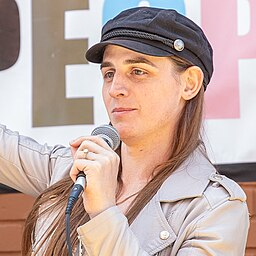
In 2023, Montana Representative Zooey Zephyr, the first transgender lawmaker in Montana, argued against legislation that would restrict transgender health care for youth, warning that the bill’s supporters would have “blood on their hands.” Montana House Majority Leader Sue Vinton called the comments out of order and then led a vote that banned Zephyr from attending or speaking during future floor sessions.[8]
In both examples, calls for respectful behavior and civil discourse censored dissenting perspectives instead of engaging with, or even debating, their merits.
When used to quell disagreement, policing discourse strategically shifts attention away from the dissent raised (in the cases in box 22.5, against racism in the legal sphere and transphobia in the legislative context) and toward the individuals or groups protesting (Kaepernick and Zephyr). Consequently, such rhetoric implies that the individuals need to change (or be “civilized”) and that the status quo, including existing systems of inequity, should be maintained.
NPR’s Karen Grigsby Bates goes so far as to argue that “pushing back against the status quo will be seen as inherently uncivil by the people who want to maintain it. And there are always higher standards expected of those people pushing back.”[9]
Deliberative discussion leaders should, therefore, proceed with sensitivity in light of these limitations and historical abuses.
- One suggestion, which we explore more in the next chapter, is to invite participants to “call out” problematic language while keeping participants in the conversation. In other words, deepen and widen the conversation instead of shutting it down or censoring voices.
- Also, encourage participants to expect a productive discussion to make them uncomfortable. It is likely their assumptions and values will be challenged. They will likely hear perspectives they had not considered and realize their conclusions need to change. They may hear language that makes them upset and need to articulate why. They may also need to listen to others express anger about things they say or solutions they prefer.
If leaders take appropriate steps and participants allow themselves to be uncomfortable, deliberative discussions can model and teach the civic skills people need to productively contribute to their communities. Participating in a discussion teaches participants to listen as much as they talk; to ask questions as well as advocate ideas; to recognize the drawbacks, and not just the benefits, of their ideas; and to consider the consequences of any choice upon a wider range of community members than only themselves.
Summary
The ability to discuss civic concerns productively with your fellow residents is an integral aspect of public speaking. This chapter offered you an explanation of the nature, benefits, and US lineage of deliberative discussions. It also provided guidance on how to effectively participate in such discussions, and it warned against calls for civil speech that silence dissenting voices.
- A deliberative discussion is a group conversation through which a community, guided by one or more moderators, thoughtfully and thoroughly examines a complex public problem as well as the range of available solutions to ultimately arrive at a decision or conclusion.
- The ongoing importance of civic-centered discussions is demonstrated through several historical US movements and organizations dedicated to public discussion and adult education.
- Productively participating in a deliberative discussion requires exhibiting several intellectual virtues, including active listening, intellectual humility and doubt, inclusiveness, imagination, reflectiveness, and responsibility for the quality of the discussion.
- Leading or participating in a deliberative discussion can result in better decision-making, potentially help you connect with people whose opinions differ from your own, and teach civic skills that people need to productively contribute to their communities.
- The norms of participating in deliberative discussions can be used to exclude community members, particularly with marginalized positionalities, by accusing them of violating “civil speech” or breaching “decorum.” Such accusations can function to maintain the status quo and systems of inequity.
Key Terms
groupthink
public judgment
public knowledge
Review Questions
- What are the two main goals of a deliberative discussion?
- What virtues does an effective participant in a deliberative discussion exhibit?
- What are two benefits and one limitation of a deliberative discussion?
Discussion Questions
- How do public knowledge and public judgment differ from individual knowledge and judgment? How do they overlap?
- Which of the five intellectual virtues do you find easiest to adopt during discussions? Most difficult? Why?
- Find an example (locally or nationally) of a person who was silenced because they did not speak in appropriate ways, as defined by a powerful leader. What was the person trying to say or do? What about their way of speaking did the leader critique? Should the person have been allowed to speak that way? Why or why not?
- Wabash Democracy and Public Discourse, "Upper Creek Watershed, Report on Initial 319 Grant Public Meeting," March 16, 2022. ↵
- “History,” The Cooper Union for the Advancement of Science and Art, https://cooper.edu/about/history, archived February 10, 2025, at https://perma.cc/VQF6-HAUZ. ↵
- Irina Rogova, "Ford Hall Forum: Promoting Free Speech Since 1908," Moakley Archive & Institute Digital Collections, 2016, updated 2018, https://moakleyarchive.omeka.net/exhibits/show/fordhallforum/openforum, archived at https://perma.cc/ANX4-D78K. ↵
- William Keith, Democracy as Discussion: The American Forum Movement and Civic Education (Lanham, MD: Lexington Books, 2004), 144, 152, 157. ↵
- Keith, Democracy as Discussion, 158, 193. ↵
- Jürgen Habermas, The Structural Transformation of the Public Sphere: An Inquiry into a Category of Bourgeois Society (Cambridge: MIT Press, 1996); Nancy Fraser, “Rethinking the Public Sphere: A Contribution to the Critique of Actually Existing Democracy,” Social Text 25 (1990): 56–80. ↵
- Dan Cancian, “Everything Trump Has Said About NFL Kneeling So Far,” Newsweek, June 8, 2020, https://www.newsweek.com/everything-donald-trump-said-nfl-anthem-protests-1509333, archived at https://perma.cc/5ET2-ZDLE. ↵
- Shaylee Ragar and Acacia Squires, “Montana House Vote to Formally Punish Transgender Lawmaker, Rep. Zooey Zephyr,” National Public Radio, April 26, 2023, https://www.npr.org/2023/04/26/1172158461/montana-gop-transgender-zooey-zephyr-punishment-banned-speaking-lgbtq, archived at https://perma.cc/M6QR-NDS2. ↵
- Karen Grigsby Bates, “When Civility Is Used as a Cudgel Against People of Color,” National Public Radio, March 14, 2019, https://www.npr.org/sections/codeswitch/2019/03/14/700897826/when-civility-is-used-as-a-cudgel-against-people-of-color, archived at https://perma.cc/98HL-C8P6. ↵

